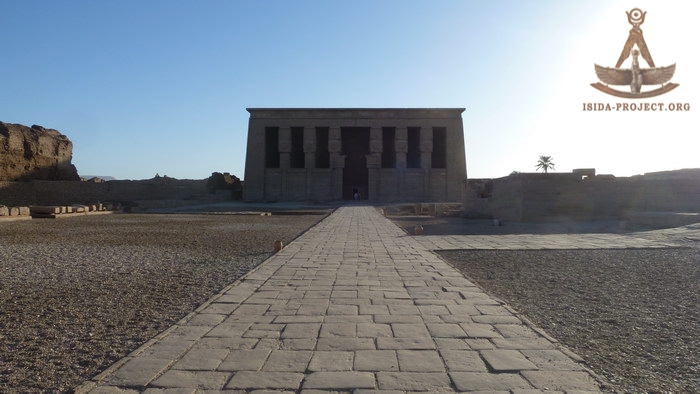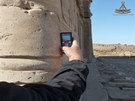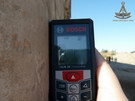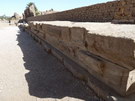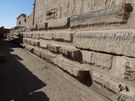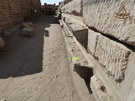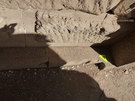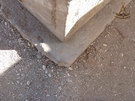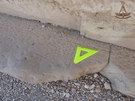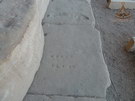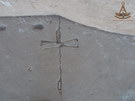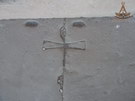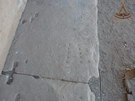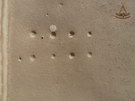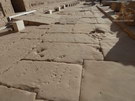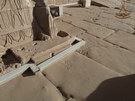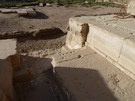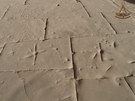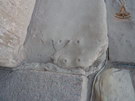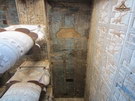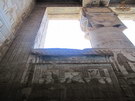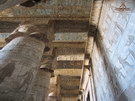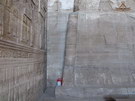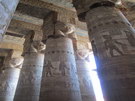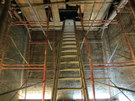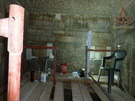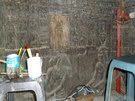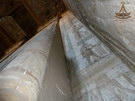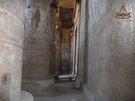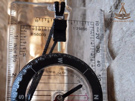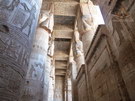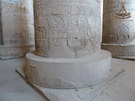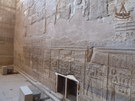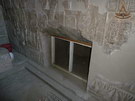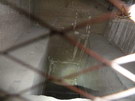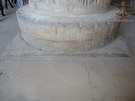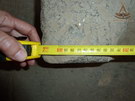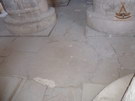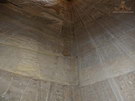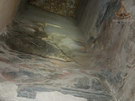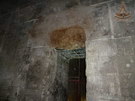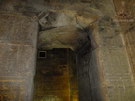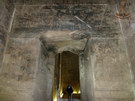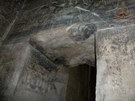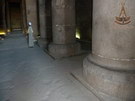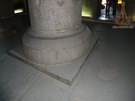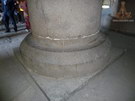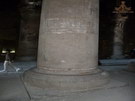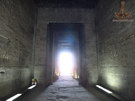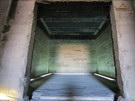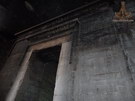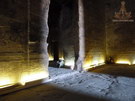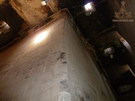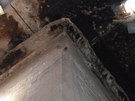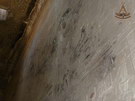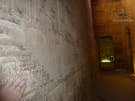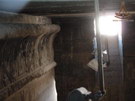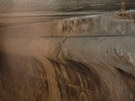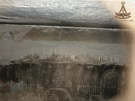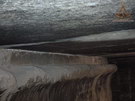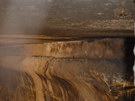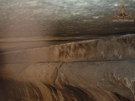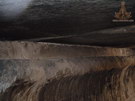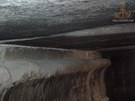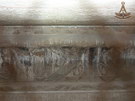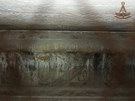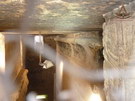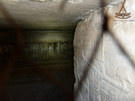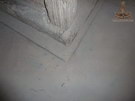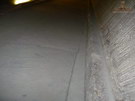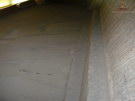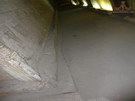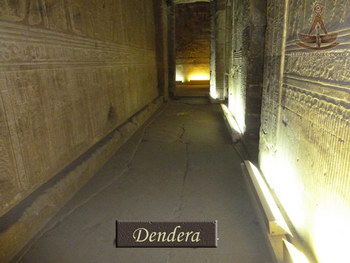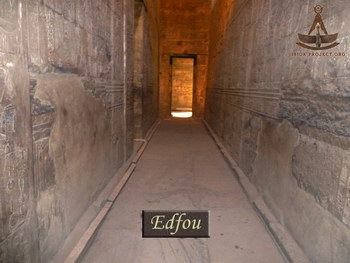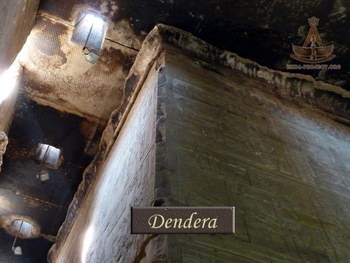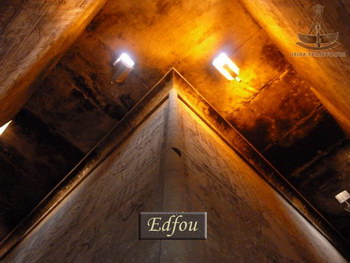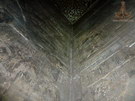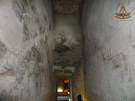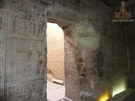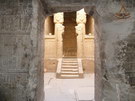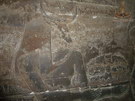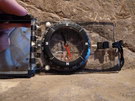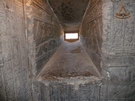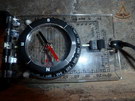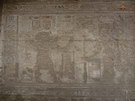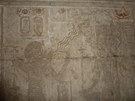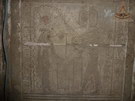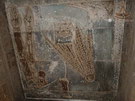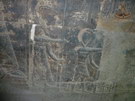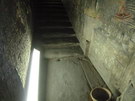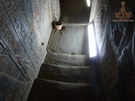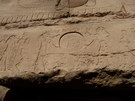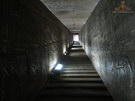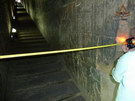|
|
 |
 |
 |
- DENDERA - The Temple of Hat-Hor
As was mentioned at the very beginnin of the Chapter, the building has deviation of 15 degrees to the East from magnetic North. The slope of the walls is 85-86 degrees.
The threshold of the Temple is made from a single block of granite. The wall, which once surrounded the building, now has only the first rows of its masonry. In some places it reaches up to the three rows of the sandstone blocks. The wall, located next to the temple, is made with megalithic masonry of rough blocks of sandstone. The fact that the surfaces of the blocks are unprocessed from their surfaces, looks unusual on the background of the overall design of the Main Temple and accompanying buildings. Perhaps the builders were in a hurry to protect the Temple from a sudden disaster and the priority was given for strengthening the wall, not for the design? Let's keep this assumption as a working hypothesis. Below are the artifacts of the floor masonry of the building. Internal architecture of the Temple. The slope of the walls of the Temple (in the first hall) is- 86-87 degrees. Passing the pillared hall, we get in the "Holy of Holies" of the Temple - the oldest building, surrounded by the strong walls of the main Temple. Many of Egyptian Temples were built on the remains of the ancient structures, the so-called "Holy of Holies." For example, the central building of Karnak, which is made of granite. Here, in Dendera, inside the Temple of Hat-Hor we see a classic engineering decision - "building inside the building." At first glance, these two "buildings" are perceived as one Temple . However, lets see by your own eyes, that between the construction of these two buildings - is a big period of time. What is located on the roof in the gap between the roof of the ancient central building and the ceiling tiles of the "modern" one? The conjunction of two buildings is shown below: As we see, there is a cement layer between the roof of the first building and the ceiling of the second. Looking closer, one can mention the clearly visible streaks of white cement, going over the damaged surface of the inner roof of the ancient building. As we see from the pictures above and video below, the foundation of the central ancient building has nothing common with the floor masonry of the main building of the Temple. The inner building existing separate from the surrounding constructions.
It is well-known historical fact, that the architectural features of the Edfu in many respects similar to the architecture of the Temple of Dendera. It seems that the ancient engineers erected both buildings, basing on the common initial scheme. But! In the case of Edfu, interior and exterior of the building have a common foundation (the masonry of the floor). Unlike Dendera, the edges of the roof of the internal building of Edfou Temple, are not damaged by the erosion. ...And ... It is the Temple of Dendera, as it was seen by the expedition of Napoleon in the beginning of the XIX century.
ISIDA Project © Copyright 2013. All rights reserved. |
||
 |
 |
 |
© ISIDA Project

